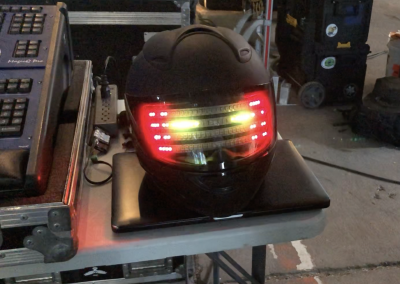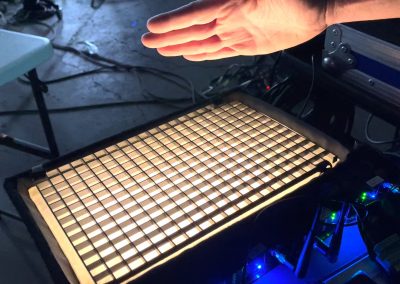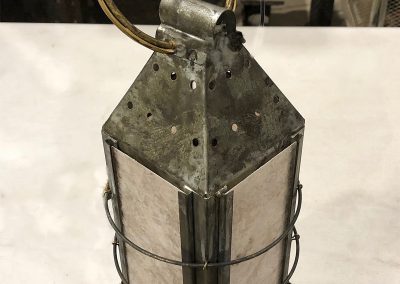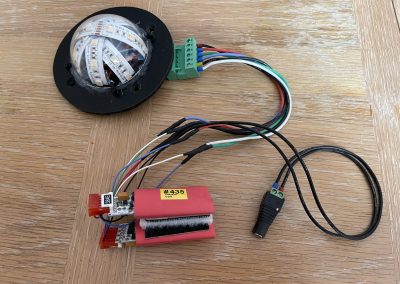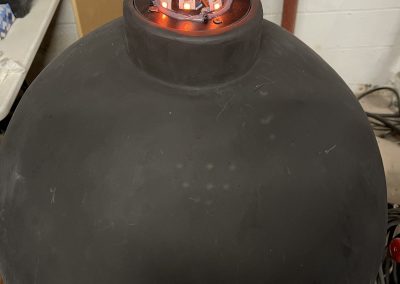“I became aware of RC4 wireless back in 2015,” states Sean McClellan, a feature film and television gaffer and best boy electric based in Albuquerque. “I was working as a core electrician back on a show called Independence Day: Resurgence, and there were many alien blaster prop guns that had integrated [RC4 Wireless] DMX4dims. That’s where I began to learn about them. Our lighting equipment package outside of the props world encompassed LEDs and included custom-built miniature LED pads and sticks; they were just ribbon-based LED products of various sizes that we would control with RC4 DMX4dims. The RC4 equipment was there, I saw it and thought ‘what is this really cool piece of technology.’ That’s where I got my start learning about the RC4 ecosystem,” he notes.
From there, McClellan began to delve into the world of RC4 Wireless products. “I started to learn about it and when there was a lull between lighting setups, I would sit there on my phone and I would scroll through the user manuals from the website,” McClellan notes. “I would familiarize myself with the product line, how to configure them, how to troubleshoot, and learned what all the blinking lights meant. I really educated myself on the system.” His first RC4 Wireless purchase was the ever-popular DMX4dim. “After I learned that system, I went on to gaff a couple of smaller projects, and I purchased my first set of DMX4dims with the transmitter, the DMXio, and from there, I built my own custom LED pads and sticks. From there on out, my inventory expanded, and I started dipping into LumenDim devices. From there, I primarily stayed in LumenDim.” McClellan has a variety of RC4 Wireless LumenDim devices, including the LumenDimPix and LumenDim micros. “In our workflow, with my gaffer, Jay Kemp, we keep the DMX4dims as a backup system,” adds McClellan.
One of McClellan’s favorite features of the LumenDim products appeared in July of ‘21. McClellan explains: “The latest firmware that just came out-the motion picture profiles, that’s my go-to now because it mimics popular CCT/RGBW modes found in professional lighting products, such as Arri, KinoFlo, and so on. To me, that’s pretty unique. My gaffer and I have newly designed LED pad and stick fixtures that were built to maximize these new profiles, so being able to use that with our programmer and have a seamless profile that works across the board that you can color match more easily, that’s probably my number one go-to feature.” James David Smith, CEO and Chief Product Designer at RC4 Wireless notes, “Last year, I created two new color-control profiles that I based on existing fixtures made by Arri, Kino Flo, and Astera. Since everyone in motion picture work uses those fixtures all the time, it made it much easier for them to use our devices.”
Since McClellan is in New Mexico, he works on plenty of period westerns. “We typically use a lot of the LumenDimM2micro and M4micro units for lantern effects. We’re always modifying handheld lanterns to work wirelessly on batteries. People think it’s just a lantern, but so much goes into it to make it reliable. Not only for the battery, but also being reliable if it gets dropped.” In the winter of ’21-‘22, McClellan was on the film The Pale Blue Eye that used 12 lanterns with RC4 Wireless LumenDimM4micros with external antennas for added signal strength. “Each character had a different style lantern and we had to be prepared with backups in case someone slipped and fell down.” We had three backups for each style of lantern all set, teched-out with the programmer, Kevin Hogan, in case the lantern got dropped and didn’t work,” recalls McClellan. The lanterns—as well as the RC4 equipment—worked perfectly.
RC4 Wireless gear is also there when it’s time to do pixel effects. “Back in 2019, we did a Netflix tv show called Daybreak, and the director wanted to mimic a Daft Punk-style motorcycle helmet. I worked with the rigging gaffer, Theo Bott, and the fixtures foreman, Joshua Phillips, and we used the LumenDimPix pixel drivers. We made a Daft Punk-style helmet for that which looked really cool on camera. Our programmer, Patrick Toohey, did some really cool pixel mapped effects on it,” McClellan states.
Recently, McClellan worked on a film that IMDB calls Wile E. Coyote. He explains, “We primarily used LumenDim4s, LumenDimM4s and M6s to control our LED light pads and litemats. I also worked with the fixtures foreman, Todd Roberts, on that job; they had to build a proxy bomb and wanted to simulate the fuse igniting. We took a couple of LumenDimM4 micros, and stuffed them down in there with some 5 channel LED ribbon to emulate the flicker from a fuse. That’s one of the things I love about the RC4 equipment is the versatility; you can take a device, you can change modes and do a Flickr effect, you can use straight DMX control or you can use RC4 Colormatch™. The versatility in each device is pretty astounding actually; it enables end-users to tailor the device to their work flow and get the desired end results rather quickly.”
For people who haven’t used RC4 equipment, McClellan says, “If someone is working in special effects and they need to control a servo motor or a telephone, they should look at RC4, because chances are they’re going to have some sort of feature that will suit your needs.”
